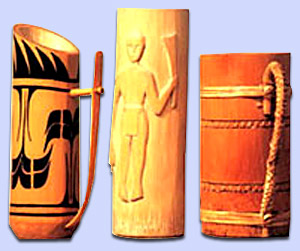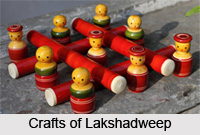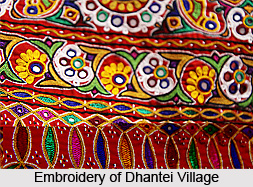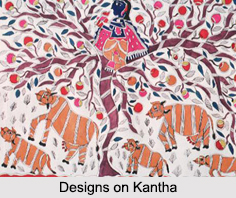 Symbols and motifs are used to design all kinds of folk arts of West Bengal. They are the manifestations of the culture, tradition and daily life of the tribal people who dedicate themselves in making those crafts. There are several kinds of symbols and motifs of folk art; for example birds, fish, leafy designs, men and women and many other common decorative patterns are seen on the folk arts of West Bengal with deep significance on them.
Symbols and motifs are used to design all kinds of folk arts of West Bengal. They are the manifestations of the culture, tradition and daily life of the tribal people who dedicate themselves in making those crafts. There are several kinds of symbols and motifs of folk art; for example birds, fish, leafy designs, men and women and many other common decorative patterns are seen on the folk arts of West Bengal with deep significance on them.
Purposes of Symbols and Motifs of Folk Art
The purposes of using symbols and motifs on folk art are uncountable. From painting "alpona" during religious rituals to "kantha" stitching with designs, designing wooden moulds to prepare "chandrapuli" and "amsatta", decorating plaited mats, weaving hand fans with multicolored threads, painting wooden seats, trays, carved wood and wooden dolls, symbols and motifs are used everywhere to express the feelings of the artisans.
Types of Symbols and Motifs of Folk Art
The most common symbols and motifs, used to design the folk arts, are lotus buds, "kalmi" or watercress creepers, paddy stalks, "shankha-lata" or design of creepers composed of conch shell diagrams, wavy and interwoven leaves and creepers, "khunti-lata" or composition of cooking spuds and other domestic articles, footprints, peacocks and other birds, betel leaves, fish, date leaves, diaper designs, rhombus-shaped designs etc. These motifs were originated from leaves, creepers, flowers, rivers, birds and animals, fish, pets, sun, moon, stars, planets and several objects of daily life:
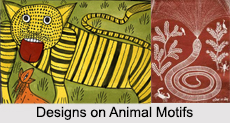 Designs on "Alpona": Among the designs on "alpona", the most recreational motif is the portrayal of "a woman holding a child by hand and a child in her arm"; this motif depicts the motherhood. This motif can also be found in the terracotta Shashthi dolls made in Panchmurho, Bankura and the rounded dolls of 10th or 12th century BC, which were discovered during the archeological expeditions at Tamluk in Medinipur and Harinarayanpur in South 24 Parganas districts.
Designs on "Alpona": Among the designs on "alpona", the most recreational motif is the portrayal of "a woman holding a child by hand and a child in her arm"; this motif depicts the motherhood. This motif can also be found in the terracotta Shashthi dolls made in Panchmurho, Bankura and the rounded dolls of 10th or 12th century BC, which were discovered during the archeological expeditions at Tamluk in Medinipur and Harinarayanpur in South 24 Parganas districts.
Snake Motif: Another motif, especially created for women, has gained immense popularity which depicts a snake held in the beak of a peacock. This motif is mostly found in the wooden moulds made by women for making "chandrapuli" and "amsatta", "kantha" designs and wooden boxes etc. This snake motif can also be seen in the terracotta sculptures on the temples of medieval period and on the decorative panels of wooden doors. Reproductions of this motif are also seen in the Rajasthani miniatures and wall paintings. During an excavation in Bardhaman, a remarkable exhibit of this popular motif has been discovered on a broken vessel of clay, which dates back to almost 1500 BC of Pandu kingdom.
Footprint Motif: "Footprint" motif on "alpona" paintings is also one of the common and yet popular motif of folk art. It is drawn on the floors during the worship of Goddess Lakshmi and many other ancient sculptures of Hindu, Buddhist and Jain. For example, the architectural edifice of Kadamrasul of the erstwhile Gourh kingdom in Maldaha District was built to worship a pair of footprints, which was engraved on stone. Date leaves are a common motif used to design "kanthas"; it is known as "khejurey chhorrhi" engravings - khejur means date and chhorrhi means a stick.
Creeper of Conch Shell Motif: The depiction of a creeper of conch shells is woven on the "baluchari" sarees. This motif is also often been found on the paintings of the Ajanta caves, which looks similar to the shape of a mango. Apart from that, diaper motif is also found on the designs of saris along with bangles of conch shells, hand fans, plaited mats etc. The diaper motif, being geometrical design, was originated from flowers and leaves.
Leafy and Flower Motifs: Terracotta engravings on the walls of temples and mosques are called "patralata" or leaf and creeper design. They are also seen on the entrance gates of the temples. Lotus petal designs were also engraved in the stone sculptures of many ancient temples; they are called "phulballi" or flower and creeper designs. This motif was influenced from the "panchamark" coins, cast copper coins and earthen vessels of the Maurya-Sunga period.



